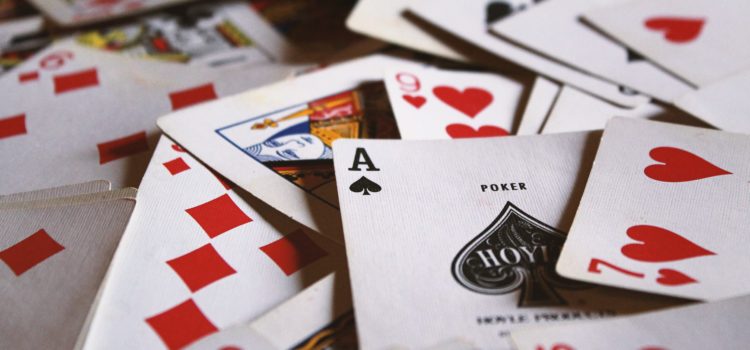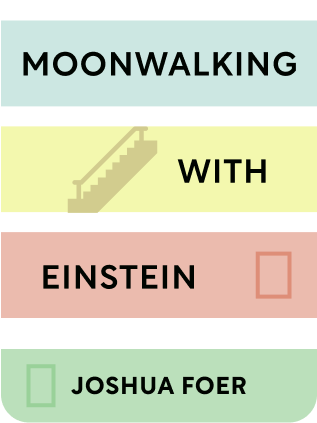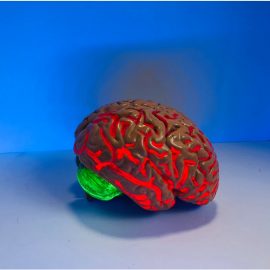

This article is an excerpt from the Shortform summary of "Moonwalking With Einstein" by Joshua Foer. Shortform has the world's best summaries of books you should be reading.
Like this article? Sign up for a free trial here .
What is a PAO system and how does it work? Can you use a PAO system to help you memorize things like numbers and cards?
A PAO system is the person-action-object system and it can help you transform numbers into images so that you are better able to memorize them. Josh Foer found that the PAO system was popular amongst professional mnemonists.
Read more about how PAO systems work, and why mnemonists use them.
Memorizing Numbers and Cards Using a PAO System
Chapter 7 covered how to transform words into images. Chapter 8 covers how to transform numbers and the order of decks of cards into images.
Memorizing Numbers
There are several, ever-evolving systems for memorizing numbers. (Techniques are always evolving because mental athletes push the sport to new levels at every competition.) This summary will discuss two methods: the Major System and PAO. The Major System is useful for things like phone numbers and credit cards, but to do the kind of heavy lifting required for international memory competitions, you’ll need to use a PAO memory system.
Major System
The “Major System” was invented by Johann Winkelmann and is a code for translating numbers into words, and then into images. Here are the steps:
- Learn the code. Each number has a letter or choice of two letters assigned to it:
- 0=S
- 1=T/D
- 2=N
- 3=M
- 4=R
- 5=L
- 6=Sh/Ch
- 7=K/G
- 8=F/V
- 9=P/B
- Transform numbers into sounds.
- Example #1: 05=SL.
- Example #2: 3928=MPNV
- Transform the sounds into words. You can add as many vowels as you need for sense, and you can transform multi-digit numbers into multiple words.
- Example #1: SL becomes “sail.”
- Example #2: MPNV becomes “map Nevada.”
- Transform the words into images.
- Example #1: The word “sail” becomes an image of a brightly colored spinnaker sail.
- Example #2: “Map Nevada” becomes an image of a map of Nevada.
- Put the images into a memory palace.
PAO Memory System (person-action-object)
In the PAO system, instead of assigning letters to single-digit numbers, you assign an image of a person acting on an object to every two-digit number. This system generates some bizarre (and therefore memorable) images. Here are the steps:
- Come up with an image of a person acting on an object for every whole number between 00 and 99. You can use whatever images are memorable to you, though mnemonists suggest not including your family members if your actions are especially lewd, because you’ll have to picture the images.
- Example #1: 45 is Tiger Woods putting a golf ball.
- Example #2: 78 is Brittney Spears singing into a microphone.
- Example #3: 89 is the queen of England scratching her armpit.
- Chunk long numbers into six-digit groups.
- For example, if you had to memorize a 12-digit number such as 457889897845, you’d break it into two groups, 457889 and 897845.
- Combine the person from the first two digits with the action from the second two digits and the object from the last two digits.
- For example, 457889 is Tiger Woods (45’s person) singing (78’s action) into an armpit (89’s object); 894578 is the queen of England putting a microphone. Instead of remembering the 12 digits, all you have to remember is the two images.
- Place each image in your memory palace. The best mnemonists place multiple images in a single location.
- For example, together in the shower, Tiger Woods might be singing into an armpit and the queen might be putting her microphone.
While you have to come up with a person, action, and object for a lot of numbers, once you have the images memorized, you have a built-in system for creating an image for any number between 0 and 999,999.
Advanced Number Memorization
The more advanced version of a PAO memory system is to come up with a person, action, and object for every three-digit number between 000 and 999, which allows you to generate unique images for every number between 0 and 999,999,999.
Another advanced version of the PAO memory technique applies specifically to binary digits. When memorizing binary digits, give each chunk of digits their own image. For example, mental athlete Ben Pridmore assigned the image of a card game to 1101001001. He’s come up with 1,024 images, one for every ten-digit combination. Using this technique, Ben was able to set a world record for learning 3,705 binary digits in 30 minutes.
Memorizing Cards With the PAO Memory Technique
Memorizing decks of cards works similarly to the PAO system for numbers. You assign each card an image of a person, place, and object, and then create an image that represents three cards. Here are the steps:
- Come up with an image of a person acting on an object for every card.
- Example #1: the six of clubs is Albert Einstein writing on a blackboard.
- Example #2: the queen of diamonds is Michael Jackson moonwalking on grass.
- Example #3: the five of hearts is Scooby-Doo defecating on a criminal.
- Combine the person from the first card with the action of the second and the object of the third.
- For example, the three-card sequence of the six of clubs, queen of diamonds, and five of hearts would result in an image of Einstein moonwalking on a criminal.
- Place the images in your memory palace. A deck of 52 cards will produce 18 images.
If you find you’re mixing up cards, you can change your images, but the original will live in your memory somewhere. This old image could potentially reappear in a competition and confuse you, so think carefully before changing images.
Advanced Card Memorization
Some mnemonists, including the author, use an advanced version of the PAO memory technique in which they create a person-action-object image for every possible combination of two cards. This allows them to compress 52 cards into nine unique images.
If you’re competing in speed card events, there are a couple additional things to keep in mind:
- Practice flipping cards quickly, or two cards at once, to shave seconds off your time.
- When you’re speed-memorizing, you don’t have time to create a vivid, richly detailed image. Before the competition, spend time with each of your images and imagine the people’s character in detail. Imagine them being in your house and doing daily activities so you get used to them in any context. Then, on competition day, you’ll be able to recall an image from just a detail.
Using a PAO system can help you develop memory techniques, and also help improve your memory overall.

———End of Preview———
Like what you just read? Read the rest of the world's best summary of Joshua Foer's "Moonwalking With Einstein" at Shortform .
Here's what you'll find in our full Moonwalking With Einstein summary :
- The memory techniques that took the author from novice to US memory champion in one year
- The 6 key types of memory we use everyday
- Why memory isn't just genetic, and how you can improve your memory with the right techniques






